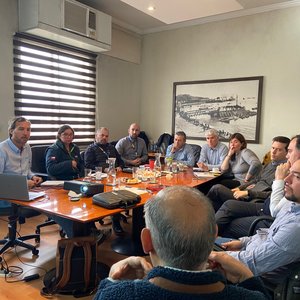Aquaculture Association of Canada to bridge the communication gap in fish farming science
Concern that the public is being deprived of a genuine opportunity to learn from science is one of the driving forces behind an initiative of the Aquaculture Association of Canada (AAC). Starting with some “hot” issues about salmon farming, the AAC is giving the public an opportunity to explore the scientific knowledge that lies beneath the sometimes stormy controversy at the surface.
“People are often left with a distorted or incorrect picture of what truly occurs in the ocean waters around fish farms,” said Chris Hendry, President of the AAC. “Our goal is to provide people with a more complete picture by using the best Canadian scientists in the field to help put the story together.”
The first “science story” will explore sea lice, the naturally-occurring small parasites that can infect both wild and farmed salmon. The in-depth scientific research that has been done in this area over the last three years was sparked by a concern that fish farms could be the source for large numbers of sea lice infecting juvenile pink salmon as they migrated out to sea.
However, the research has shown that the story is not so simple. Scientists know that there are 13 different species of sea louse, only two of which are most likely to infect salmon. But they have also discovered that one of these uses another species of fish as its host – the stickleback.
“It’s just too simplistic to say that salmon farms are the culprit for all sea lice infestations,” says Dr. Simon Jones, Fish Health Research Scientist, Fisheries and Oceans Canada, Aquaculture Division.
There are still things that remain to be discovered in this area, but it is becoming clear that salmon farms are not nearly the menace they have been made out to be.
Getting this story out is so important because many people have only ever heard the original concern magnified into an alarm by media stories and opinion columnists.
“If people are to have an opportunity to genuinely learn in these kinds of situations and to be able to make truly informed decisions as consumers or as conservationists, they need to be able to access reliable scientific information,” continued Mr. Hendry. “This sea lice science information will be accessible through the web site of the AAC at www.aquacultureassociation.ca.”
The next science story that will come out of this initiative will assemble the scientific knowledge on the use of fish oils derived from capture fisheries. This and other science stories that follow will eventually be incorporated into a publicly accessible national web site and database called AquaPort.ca, wich will enable people to explore these stories in depth and investigate related knowledge resources.
“We need to get beyond public misinformation,” says Mr. Hendry, “and move toward public learning. The Aquaculture Association of Canada is committed to this goal.”
For further information contact Chris Hendry, AAC President
chendry@gov.nl.ca
SEA LICE FACT SHEET
http://www.aquacultureassociation.ca/news/Sea_Lice_Fact_Sheet.pdf










